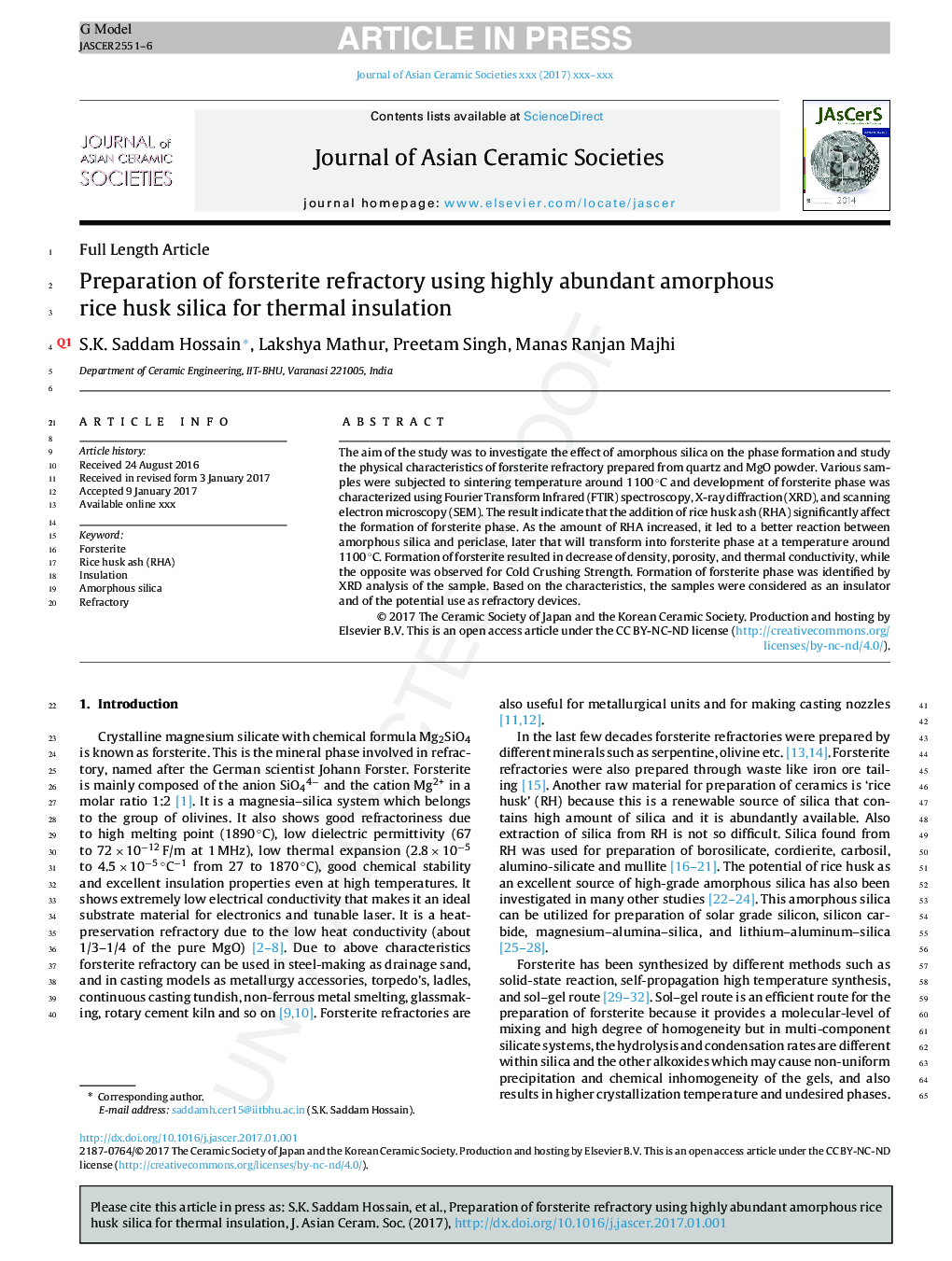| Article ID | Journal | Published Year | Pages | File Type |
|---|---|---|---|---|
| 7897600 | Journal of Asian Ceramic Societies | 2017 | 6 Pages |
Abstract
The aim of the study was to investigate the effect of amorphous silica on the phase formation and study the physical characteristics of forsterite refractory prepared from quartz and MgO powder. Various samples were subjected to sintering temperature around 1100 °C and development of forsterite phase was characterized using Fourier Transform Infrared (FTIR) spectroscopy, X-ray diffraction (XRD), and scanning electron microscopy (SEM). The result indicate that the addition of rice husk ash (RHA) significantly affect the formation of forsterite phase. As the amount of RHA increased, it led to a better reaction between amorphous silica and periclase, later that will transform into forsterite phase at a temperature around 1100 °C. Formation of forsterite resulted in decrease of density, porosity, and thermal conductivity, while the opposite was observed for Cold Crushing Strength. Formation of forsterite phase was identified by XRD analysis of the sample. Based on the characteristics, the samples were considered as an insulator and of the potential use as refractory devices.
Related Topics
Physical Sciences and Engineering
Materials Science
Ceramics and Composites
Authors
S.K.S. Hossain, Lakshya Mathur, Preetam Singh, Manas Ranjan Majhi,
